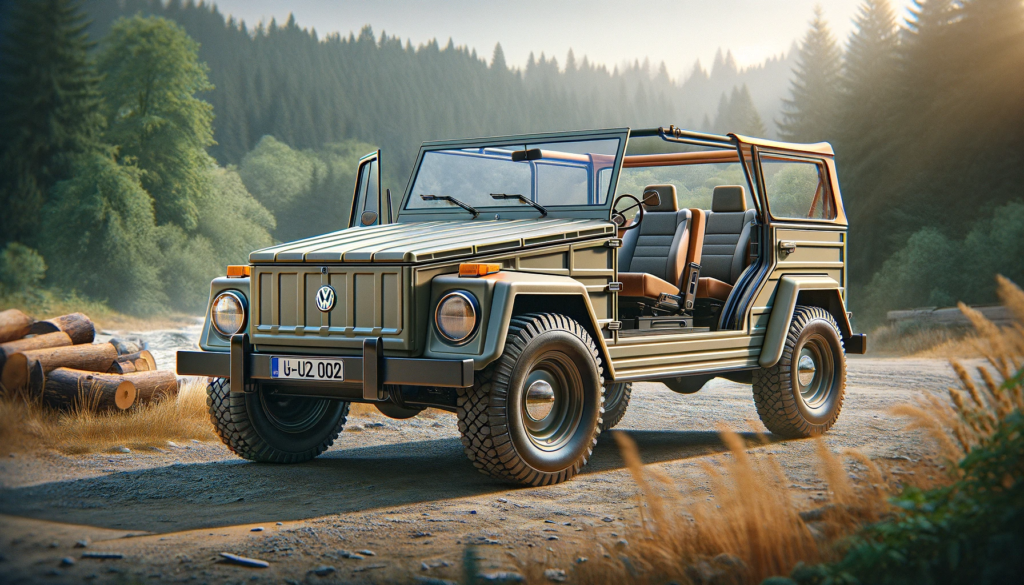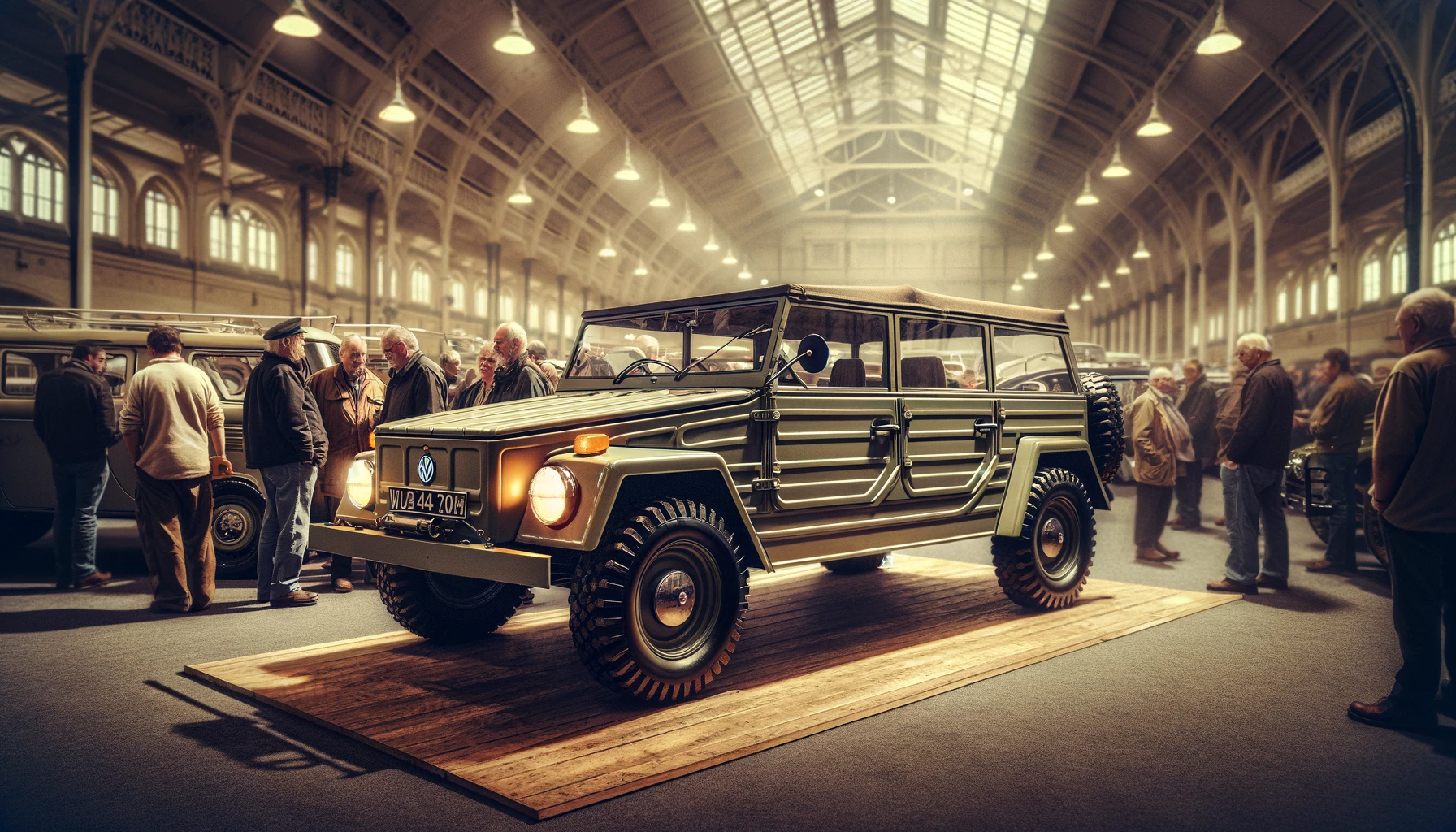The Volkswagen Thing, officially known as the Type 181, is one of the most unique and eccentric models in Volkswagen’s storied history. This quirky vehicle, with its utilitarian design and military origins, has garnered a cult following over the years. In this article, we will explore the history of the Volkswagen Thing, from its inception to its lasting impact on automotive culture.
Origins and Development
The Volkswagen Thing was originally developed in the late 1960s as a military vehicle for the German Army. Known as the Kurierwagen, it was designed to be a light, versatile, and robust vehicle that could handle rough terrains and varied weather conditions. The design borrowed heavily from the Kübelwagen, a military vehicle used by the German forces during World War II, which was also based on the Beetle’s chassis and mechanicals.

Introduction to the Civilian Market
In 1968, Volkswagen decided to introduce the Type 181 to the civilian market. The vehicle was rebranded as the Volkswagen Thing in the United States and was launched in 1971. The Thing’s rugged, boxy design and removable doors and roof made it stand out from other vehicles of the time. It was marketed as a fun, recreational vehicle suitable for a variety of outdoor activities.
Unique Design and Features
The Volkswagen Thing’s design is both utilitarian and distinctive. Here are some of its notable features:
- Removable Doors and Roof: The Thing’s doors and roof could be easily removed, allowing for an open-air driving experience. This feature was particularly appealing to outdoor enthusiasts and beachgoers.
- Flat, Fold-Down Windshield: The windshield could be folded down onto the hood, adding to the vehicle’s rugged, off-road appeal.
- Simple Interior: The interior of the Thing was basic and functional, with minimalistic gauges and controls, making it easy to clean and maintain.
- Durable Construction: Built on the Beetle’s sturdy chassis, the Thing was designed to withstand tough driving conditions.
Popularity and Cultural Impact
Despite its unconventional appearance, the Volkswagen Thing quickly gained a following in the United States and other markets. Its versatility and unique design made it popular among a wide range of drivers, from outdoor adventurers to those simply looking for a fun and distinctive vehicle.
The Thing’s popularity was further bolstered by its appearances in various movies and TV shows, cementing its status as a cultural icon. Its quirky charm and retro appeal have continued to attract enthusiasts and collectors over the years.
| Movie/TV Show | Description |
|---|---|
| “Scooby-Doo” | Featured as the Mystery Machine in several episodes, highlighting its quirky design. |
| “Scarecrow and Mrs. King” | The Thing was prominently used by the characters, showcasing its rugged charm. |
| “Revenge of the Nerds” | Appeared as the vehicle of choice for the nerds, adding to its cult status. |
| “The Thing” | Featured in the 1982 horror film, making its presence known in a tense, eerie setting. |
| “The A-Team” | Used in multiple episodes, emphasizing its versatility and utilitarian design. |
Decline and Discontinuation
The Volkswagen Thing’s production run was relatively short-lived. By the late 1970s, changing safety regulations and declining sales led to its discontinuation in most markets. In the United States, the last model year was 1974, while production continued in Mexico until 1980.
Impact of Safety Regulations
During the mid-1970s, the automotive industry faced significant changes in safety regulations, particularly in the United States. New safety standards required significant modifications to vehicle design, including improved crashworthiness, the incorporation of airbags, and stricter emissions standards. These regulations impacted many unique and low-volume models like the Thing, as the cost of compliance would have been disproportionately high relative to their sales figures.
Shifting Market Trends
The late 1970s saw a shift in consumer preferences towards more conventional and fuel-efficient vehicles. The oil crisis of 1973 had a lasting impact, making fuel economy a critical decision factor for many buyers. The Volkswagen Thing, with its utilitarian design and less emphasis on comfort and fuel efficiency, fell out of favor as the market moved towards more family-friendly and economical cars. This shift contributed significantly to the decline in sales and the eventual discontinuation of the model.
Despite its brief production period, the Thing left a lasting impression on the automotive world. Its distinctive design and unique features have ensured its place in automotive history as one of Volkswagen’s most eccentric and beloved models.
Legacy and Enthusiast Community
Today, the Volkswagen Thing enjoys a robust enthusiast community. Owners and fans of the Thing gather at car shows, online forums, and social media groups to share their passion for this unique vehicle. Restored and well-maintained examples of the Thing are highly sought after by collectors, often commanding high prices in the classic car market.
Dedicated Events and Gatherings
Volkswagen Thing enthusiasts often organize and participate in various events and gatherings, such as the annual “Thing Show” in Southern California, which brings together Thing owners from across the country to showcase their vehicles, share stories, and exchange tips on restoration and maintenance. These events foster a strong sense of community and camaraderie among Thing enthusiasts, celebrating the vehicle’s unique charm and historical significance.
Notable Restorations and Modifications
The creativity and dedication of the Volkswagen Thing community are evident in the numerous restorations and modifications enthusiasts have made to their vehicles. From meticulously restoring a Thing to its original factory condition to creating custom off-road versions equipped with modern amenities, owners take great pride in preserving and enhancing their Things. These projects not only showcase the versatility of the Thing but also highlight the innovative spirit of its fans, ensuring the vehicle remains a vibrant part of automotive culture.
Conclusion
The Volkswagen Thing is more than just a quirky vehicle from the past; it is a symbol of creativity and versatility in automotive design. From its military origins to its status as a cultural icon, the Thing has carved out a unique niche in Volkswagen’s history. Whether you are a classic car enthusiast or simply appreciate automotive eccentricity, the Volkswagen Thing remains a fascinating and beloved model that continues to captivate hearts and minds.
